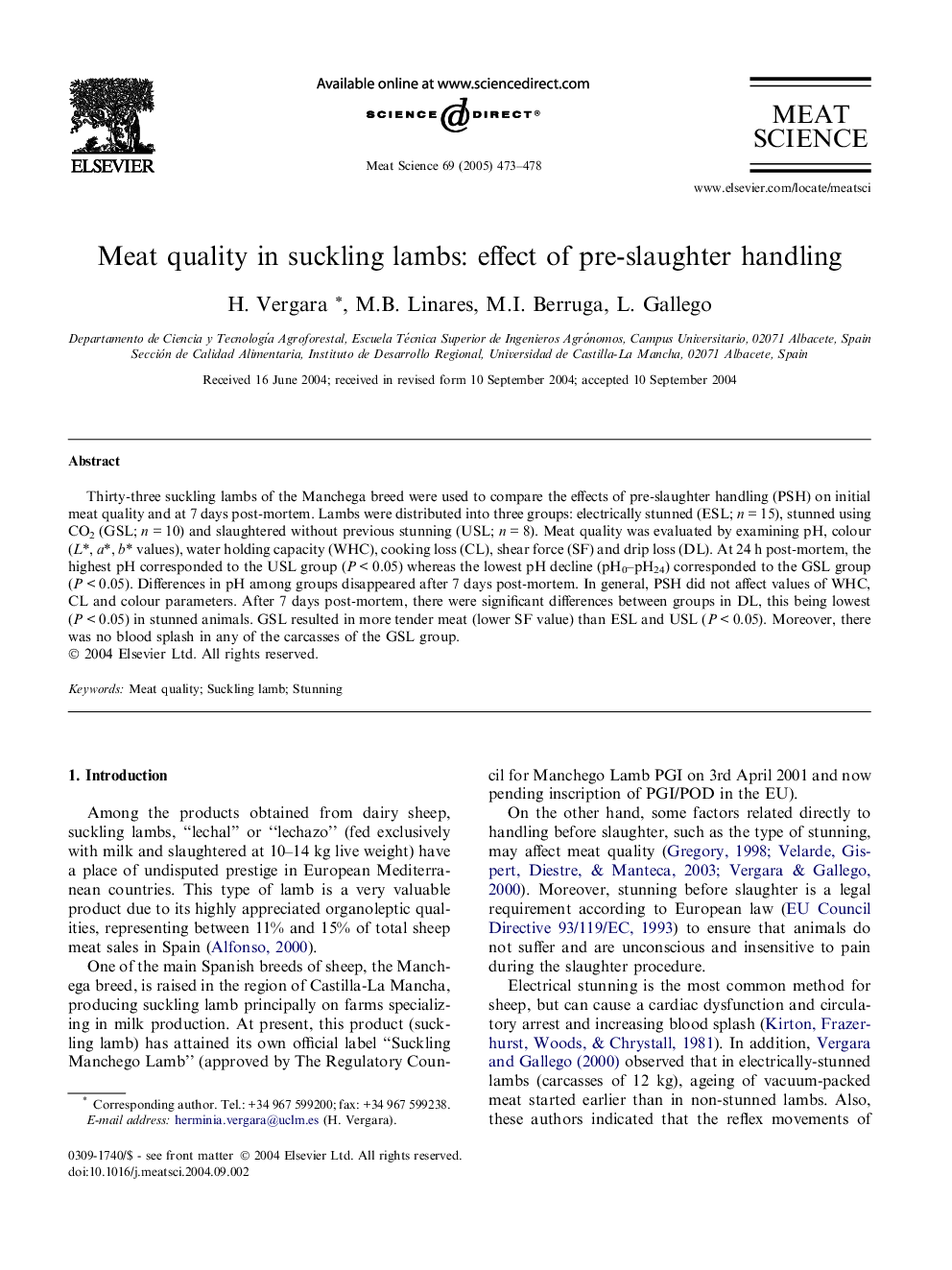| Article ID | Journal | Published Year | Pages | File Type |
|---|---|---|---|---|
| 8983901 | Meat Science | 2005 | 6 Pages |
Abstract
Thirty-three suckling lambs of the Manchega breed were used to compare the effects of pre-slaughter handling (PSH) on initial meat quality and at 7 days post-mortem. Lambs were distributed into three groups: electrically stunned (ESL; n = 15), stunned using CO2 (GSL; n = 10) and slaughtered without previous stunning (USL; n = 8). Meat quality was evaluated by examining pH, colour (L*, a*, b* values), water holding capacity (WHC), cooking loss (CL), shear force (SF) and drip loss (DL). At 24 h post-mortem, the highest pH corresponded to the USL group (P < 0.05) whereas the lowest pH decline (pH0-pH24) corresponded to the GSL group (P < 0.05). Differences in pH among groups disappeared after 7 days post-mortem. In general, PSH did not affect values of WHC, CL and colour parameters. After 7 days post-mortem, there were significant differences between groups in DL, this being lowest (P < 0.05) in stunned animals. GSL resulted in more tender meat (lower SF value) than ESL and USL (P < 0.05). Moreover, there was no blood splash in any of the carcasses of the GSL group.
Keywords
Related Topics
Life Sciences
Agricultural and Biological Sciences
Food Science
Authors
H. Vergara, M.B. Linares, M.I. Berruga, L. Gallego,
